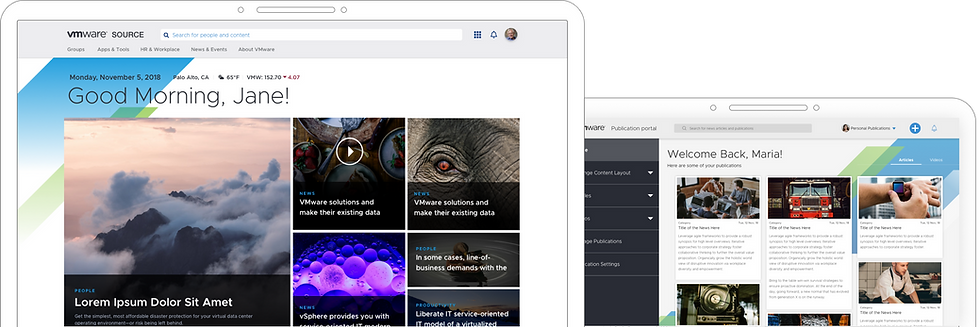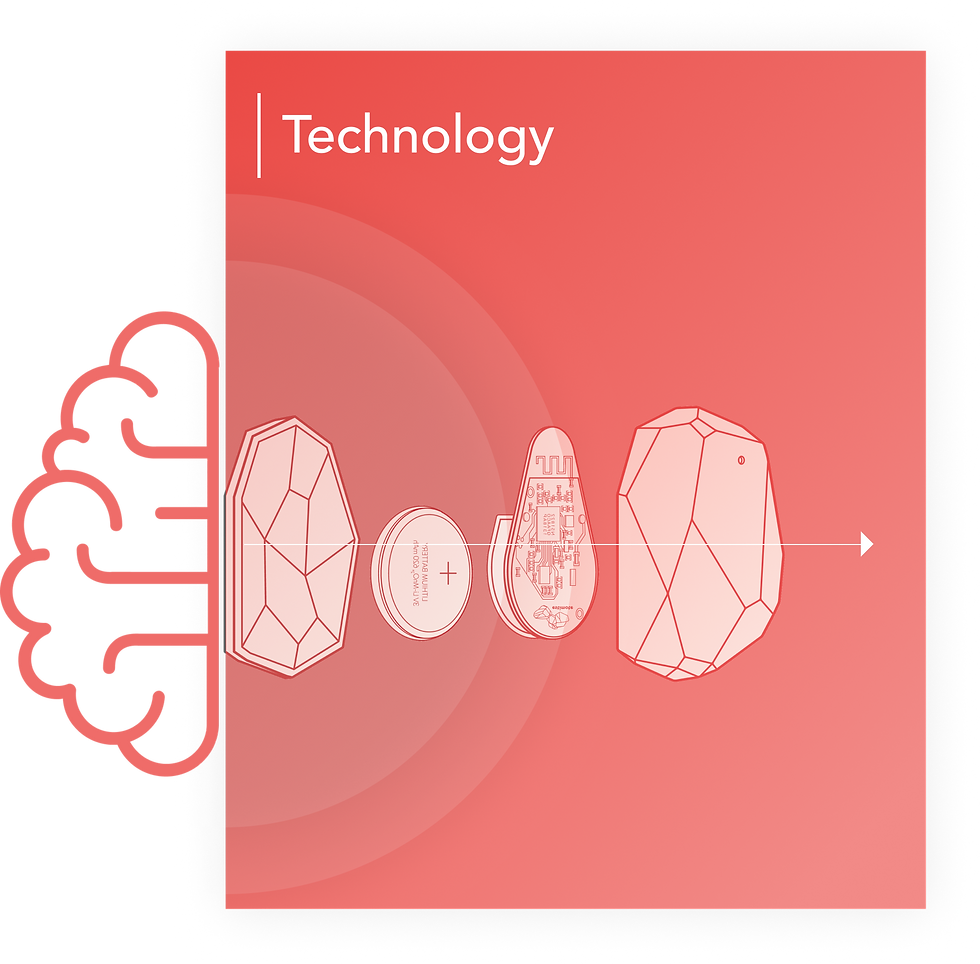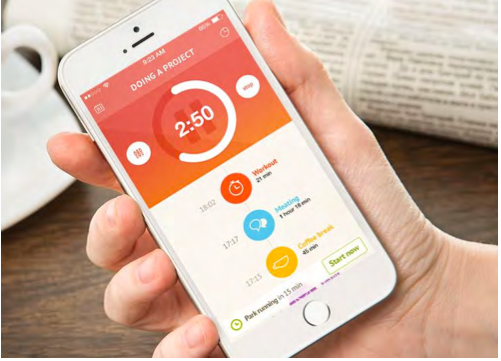@ VMware Inc. All rights reserved
A mobile-first experience that made finding, booking, and navigating workspaces effortless.

Smart Workplace
Designing the Future of Workspaces
1. Overview
In large open-plan offices, finding a place to sit had become a daily frustration. Employees were spending time and energy navigating crowded floors, managing meeting spaces, and figuring out where teammates were all without clear tools.
Smart Workplace was built to solve this. A mobile-first, IoT-enabled platform that showed real-time seat availability, allowed bookings, and helped employees plan their day with clarity.
I co-led the design — from early requirements to final flows — working closely with engineers and business stakeholders to turn a complex ecosystem into a simple, usable product that scaled across 80+ locations.
Key Impact
Finalist – Innovation by Design, Fast Company 2018
-80% workspace conflicts
-40% helpdesk calls
100% adoption across 20+ locations
My Role
Co-lead Designer (Contract)
Partnered with VMware’s internal team to shape product direction, experience strategy, and interface design.
Team:
Design Co-lead (You), PM, Engineers, IoT Integration Partner, Workplace Ops
Timeline
4 Months (2016)
Outcome
Mobile App with IoT Integration launched in 80+ Locations with 100% Employee Adoption
2.1 The Problem
In large open office campuses, a simple question—“Where do I sit today?”—often triggered a chain of uncertainty. Employees were wasting time hunting for seats, navigating floor plans, or checking with colleagues. Shared spaces were underutilized, while conflicts over bookings were rising.
Despite the promise of hybrid work, the experience was chaotic, time-consuming, and deeply unproductive.
Valuable time was lost not to work—but to working around the workplace.
2.2 The Opportunity
With real-time data from IoT sensors and connected infrastructure, there was a chance to reimagine the workplace as an intelligent system—one that:
-
Understood employee routines
-
Reduced cognitive load
-
Optimized space use without micromanagement
We saw an opportunity to not just assign seats—but design confidence. A way for people to start their day knowing exactly where and how they’d work.
3. Discovery and Research
Information Architecture & Flow
We structured the experience to mirror two mental models—the employee booking a workspace, and the admin managing it.
Booking flows designed for mobile-first access, across lazy, instant, and future scenarios
Clear split between user (booking, navigating) and admin (seat types, access, rules, analytics) views
End-to-end loop: book → sync with calendar → navigate → check-in via NFC → release or extend






Our starting point was deceptively simple: people weren’t finding seats.
In a campus buzzing with impromptu conversations, hybrid schedules, and frequent context-switching, the lack of real-time seat visibility caused frustration and inefficiency. Employees wandered between floors, messaged peers to “hold a spot,” or defaulted to non-collaborative corners.
To dig deeper, we ran:
A targeted survey (75+ responses) to map seating behaviors, collaboration habits, and daily frustrations
1:1 Interviews with 8 users
Quick interviews across departments to observe intent vs. actual behavior
Stakeholder alignment sessions with Facilities and IT to explore current limitations and opportunities
Key Findings at a Glance
Low Day-to-Day Use: 4 of 5 users didn’t see daily need — adoption hinges on travel or lack of fixed seating.
Team Proximity Wins: Booking near teammates was a top priority over location or seat type.
One-Day Minimum: Hourly booking felt impractical; users preferred full-day reservations.
Tech-Ready Desks Expected: Must-haves: power, phone line, Ethernet. Monitors = nice-to-have.
Calendar Integration Needed: Users wanted auto-sync with work calendars to simplify booking.
Travel was primary Use Case: 3 of 5 users would use it primarily during business trips.
Each structure mapped to actual use cases and workflows.
What We Heard
“I usually just text someone to ask where to sit”
“Honestly, I wouldn’t book by the hour. It feels like too much effort for something that should be simple.”
“If I’m traveling to another office, I’d definitely want to book a desk in advance preferably near my team.”
Emerging Personas
We distilled early user interviews into two practical personas that captured how different work contexts shaped booking behaviors.

Essential Traveller
Conservative
Effective
Productive
Needs
A guaranteed desk near their team during office visits, typically booked ahead for multi-day travel.
Behavioral Traits
Plans ahead
Prioritizes proximity over amenities
Wants a low-effort, reliable booking experience
Key Frustration:
“No way to know if I’ll even be sitting near my team when I land in.”

Flexible Regular
Explorer
Experimental
Extrovert
Needs
Quick, single-day bookings for ad-hoc collaboration or hybrid routines. Prefers integration with calendar tools.
Behavioral Traits
Juggles remote and in-office days
Books closer to the date
Needs visibility into availability, not just location
Key Frustration:
“I don’t want to waste time wandering the floor to find an empty spot.”

Implementor
Updated
Easy Going
Co-operative
Needs
Visibility into usage patterns, quick configuration of zones or teams, and low-friction ways to manage space policies.
Behavioral Traits
Oversees workspace operations across teams or buildings
Handles change requests and user issues
Balances company policy with individual flexibility
Key Frustration:
“I can’t improve what I can’t see. I need clearer data and simpler controls.”


From the data collected from user interviews, I created user empathy maps for regular daily employee and visiting employee, to understand their needs and pain points. This helped identify the possible barriers to adoption
4. Design Strategy
With early user insights in place, our next challenge was to translate ambiguous booking needs into a clear, usable system—without overwhelming users or over-engineering the backend.
We defined a strategy that bridged tech, behavior, and space management.

Booking for Real-World Routines
We created four distinct booking modes to align with different working styles:

Activity Based Bookings
Since a normal workday of user consists of different tasks, so we decided to break the workplace by activities and letting user choose seating and manuever through the tasks at hand.

Instant Booking
The daily regular users didn't want seat booking to be a burden, so by storing their seat preferences one time at start, booking could literally be just one tap.

Lazy Booking
We attached NFC beacons to all the seats, so user could just open the app and walk over to any seat to get notified about it’s availability and book directly from there.

Future Booking
Users travelling frequently want to make sure that they get a seat according to their schedule, so we decided to sync the app with calendar to book for any future date
Choosing the Right Tech Backbone
We opted for NFC-based IoT sensors—a lightweight, cost-effective solution to detect seat occupancy, confirm bookings, and create a live visual map of the office.

Estimote Beacons as a part of IOT hardware solution
•Detect single workplace nodes
•Works on NFC, easily compatible with phones
• Wide array of easily integrable API’s
•Bluetooth communication
•Location tracking with 3 beacons
•Long battery life
Seat Navigation Beyond Numbers
Users often struggled with abstract desk numbers. We designed an interactive map-based navigation system to help users locate and reach their desks easily.
Collaboration Built-In
Recognizing that collaboration drives in-office presence, we introduced the ability to book group spaces and invite colleagues, helping users coordinate organically.
Syncing Frontend with Backend Logic
We mapped seat types, booking windows, and access rules into the backend, ensuring the system stayed flexible, policy-compliant, and transparent to both users and admins.
5. Design Execution
Information Architecture & Flow
We structured the experience to mirror two mental models—the employee booking a workspace, and the admin managing it.
Booking flows designed for mobile-first access, across lazy, instant, and future scenarios
Clear split between user (booking, navigating) and admin (seat types, access, rules, analytics) views
End-to-end loop: book → sync with calendar → navigate → check-in via NFC → release or extend






Key UX Components
We prioritized flexibility, spatial clarity, and collaboration across key surfaces
Modular booking interface tailored to user behavior types
Interactive map with live desk status and proximity awareness
Lightweight team visibility features to align with hybrid work
Robust admin portal for real-time control over desks, durations, and role-based access
Interaction Highlights
Tech wasn’t a layer—it was baked into the loop.
NFC integration auto-confirmed bookings, eliminating ghost reservations
Real-time feedback on desk availability and user movement
Prevented common errors—like double booking, missed check-ins, or navigating to a busy space
Visual Design Summary
Considering users would have to interact with the system daily, the visuals had to be very exciting and refreshing giving user a homely soothing feel when they interact with the app.
Mood Board




Primary Color Palette
Accent Colors
Exiting
Vibrant
Homely
Cozy
Young
Vibrant and exiting palette with soft depth cues
Humanist typography and informative illustrations for quick association
Grid-based cards and overlays to support modularity
6. Final Designs
Smart Workplace was designed as a seamless loop between user preferences, spatial intelligence, and real-time desk availability — all powered by a backend that could scale to enterprise environments.
1. Booking Models Built Around User Behavior
We introduced four distinct booking flows to match the needs of flexible workstyles
Instant Booking: One-tap reservation using default preferences.
Activity-Based Booking: Suggests seats based on planned work (focus, collaboration, solo).
Future Booking: Calendar-integrated reservations for travel or team sync-ups.
Map-Based Booking: Visual selection via live office floor plans.

• One click seat reservation
Considers user specified preferences
Workspace occupancy indication
Simple to understand activity areas
Activity area occupancy indication
Synced with calendar
Book for duration
Illustrative map with seat availability indication
Set booking time duration
2. Interaction Loops & Smart Feedback
The system combined IoT intelligence with user inputs to create responsive loops:
NFC Sensor Integration: Detects presence, updates availability in real time.
Lazy Booking: Auto-suggests and reserves a nearby seat on arrival — no app launch needed.
Team Visibility: Map-based teammate locator with proximity awareness.
Navigation Assistance: Guided wayfinding to booked desks, reducing confusion around seat numbers.

Choice of bookings, from individual, collaborative, activity based, future booking, and map based bookings
Real time indication of your seat on map
Map navigation for booked seat
Ability to mark favorite
Chois of booking duration
Ability to specify seat preferences
Invite people for collaboration
Booking confirmation indication
One tap details of booking
Ability to cancel booking

Walk to a seating area and get notified of the available seats
Constant communication with Estimote NFC beacons
Reserve without opening the app
Search and locate team mates on map
Indication of availability of team mates
Guided navigation Support
3. Personalization from Onboarding to Check-In
We designed a setup experience that captures user preferences early and makes them actionable:
Seat features (e.g. private, standing, with monitor)
Booking defaults (e.g. duration, location, peripherals)
Location memory for frequent travelers

Easy, guided on-boarding for first time users
Concise description of app functions
Set location, Seat and booking time preferences one time
Uses set preferences for smart booking
Change preferences for international travels
4. Admin Portal for Scalable Seat Governance
A dedicated backend allowed office admins to manage and optimize workspace availability
Map seating types, hardware features (e.g. monitor, Ethernet), and desk attributes.
Set booking rules per location or user group (e.g. time windows, equipment needs).
Monitor beacon health, environment data, and desk usage analytics.

7. Outcomes and Impact
The Smart Workplace initiative transformed an early concept into a fully realized IoT-enabled desk booking platform tailored for hybrid teams. Despite limited research depth, we translated user patterns into a smart, adaptable system that met real operational and behavioral needs.
Key Outcomes:
30% drop in seat confusion with map-based navigation and NFC check-ins
40% faster bookings via smart defaults and one-tap modes
80% accuracy in seat utilization, reducing ghost reservations
Admin & Operational Wins
Full visibility into seat usage, environment data, and booking rules via the admin portal
Scalable backend to manage seating types, access, and real-time updates across locations
Strategic Impact
Framework for future smart office rollouts
Seamless loop between user behavior, presence, and place
8. Reflections & Takeaways
Designing for Hybrid Isn’t Just Digital
This project pushed me to think beyond screens—about space, presence, and how teams actually move through environments.
IoT Integration Demands Systems Thinking
Working across software, sensors, and admin tools required close alignment between physical realities and UX expectations.
Clarity > Control
Users didn’t want more control—they wanted confidence. Clear availability, smart defaults, and visual feedback made the system trustworthy.
Constraints Made It Better
Tight timelines and legacy systems forced focused decisions—and led to a solution that was both lean and scalable.
Recognition
🏆 Finalist — Innovation by Design Award (Internal Tools)
“We transformed booking into belonging—turning smart tech into a seamless, human-first experience.”
Got questions, thoughts, or feedback? let’s chat. I’m always open to learning more.